![]()
![]()
![]()
Use LEFT and RIGHT arrow keys to navigate between flashcards;
Use UP and DOWN arrow keys to flip the card;
H to show hint;
A reads text to speech;
25 Cards in this Set
- Front
- Back
|
Name the region: occurs from the state of Washington down the Cascades and Sierra Nevada mountain ranges, east across the central and southern Rockies, and south to central Mexico. *above 4000 feet* |
Pinyon-Juniper zone |
|
|
Why did juniper spread so much through the west over the past 100-150 years? (3 reasons) |
1) toxic leaves (leech into ground, increasing competitiveness)
2) roots (extensive, and far-spread)
3)opportunistic (over-grazing decreased fire occurrences, allowing juniper seedlings to proliferate) |
|
|
Describe the Pinyon-Juniper Zone. |
-southern Summer rain & northern Winter snow
-poorly developed soil w/low nutrients and low organic matter (Aridisols &Entisols)
-poor tree growth (low precip/humidity, high solar radiation and summer temperatures) |
|
|
Describe the Mountain Browse Zone. |
Occurs in dense clumps, not a continuous cover
Important for wildlife: rugged terrain and mainly Winter shrub habitat
Important fire regime for fire-tolerant sprouter shrubs |
|
|
Name the region: the western mountainous area transition between grasslands and shrublands (including pinyon-juniper areas) to conifer forests which may be marked by an area of deciduous shrubs |
Mountain Browse Zone |
|
|
Name the region: vast elevation differences (1600-7200 feet), extends from British Columbia to Mexico and South Dakota. |
Ponderosa Pine Zone |
|
|
Describe the Ponderosa Pine Zone. |
Frequent droughts with warm Summers and cold Winters
Fire exclusion, over-grazing, diseased/dead trees, and increased crown fires have caused dramatic alterations (overcrowding of fire-intolerant species, reduced biodiversity)
Variety of soils, formed from igneous and sedimentary rocks |
|

What are the scientific and common names? |
Purshia tridentata Antelope bitterbrush |
|
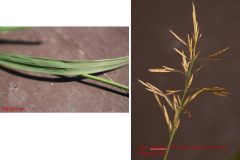
What are the scientific and common names? |
Bromus inermis Smooth brome |
|
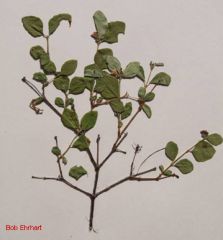
What are the scientific and common names? |
Symphoricarpos spp. Snowberry |
|
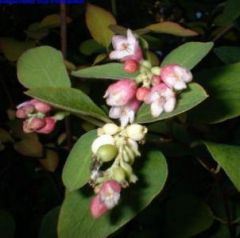
What are the scientific and common names? |
Symphoricarpos spp. Snowberry |
|
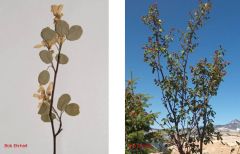
What are the scientific and common names? |
Amelanchier alniforlia Serviceberry |
|
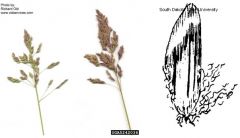
What are the scientific and common names? |
Poa pratensis Kentucky bluegrass |
|
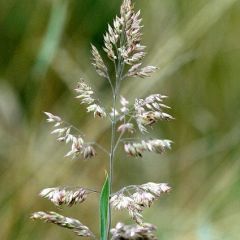
What are the scientific and common names? |
Poa pratensis Kentucky bluegrass |
|
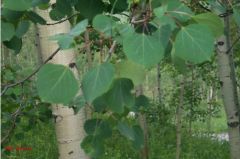
What are the scientific and common names? |
Populus tremuloides Quaking aspen |
|
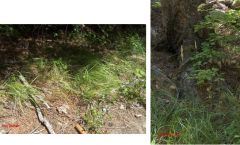
What are the scientific and common names? |
Calamagrostis rubescens Pinegrass |
|
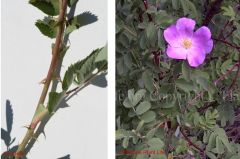
What are the scientific and common names? |
Rosa spp. Rose species |
|
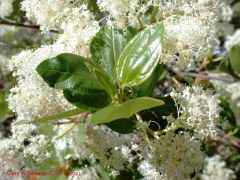
What are the scientific and common names? |
Ceanothus velutinus Snowbrush |
|
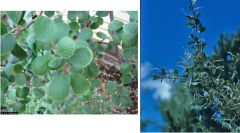
What are the scientific and common names? |
Cercocarpus montanus Birchleaf mountainmahogany |
|
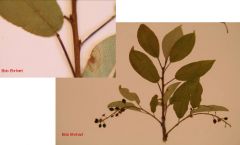
What are the scientific and common names? |
Prunus virginiana Chokecherry |
|

What are the scientific and common names? |
Prunus virginiana Chokecherry |
|
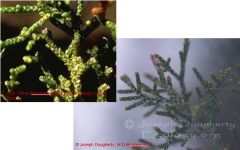
What are the scientific and common names? |
Juniperus occidentalis Western juniper |
|
|
Numerically list the bio-zones in the proper order, from lowest to highest, in terms of their location on the landscape. (ie: abc, bca, cab, etc. [no spaces]
a. Mountain browse zone b. Pinyon-juniper zone c. Ponderosa pine zone
|
bac |
|
|
What is the ecological advantage of "evergreenness" in plants? |
Photosynthesize whenever temperatures and moisture conditions permit |
|
|
Which type of shrubs are likely to recover quicker after fire: non-sprouters or sprouters? Why? |
Sprouters are more likely to recover more quickly than non-sprouters because they have more meristematic tissue. Their abiliy to resprout is a morphological adaptation to disturbance. |

